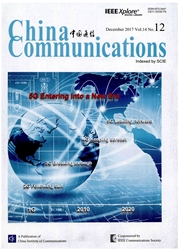

 中文摘要:
中文摘要:
针对单分类器识别的局限性和玉米叶部病害的复杂性,该文提出了一种基于自适应加权的多分类器融合的玉米叶部病害识别方法.首先,对采集的玉米叶部病害图像的病害区域分别提取颜色、颜色共生矩阵和颜色完全局部二值模式3种特征,并相应地构建3个基于支持向量机的单分类器;然后,利用K近邻和聚类分析的方法计算各单分类器的自适应动态权值;最后,通过线性加权的方式进行融合判决,得到最终的分类结果.利用该方法对 7 种常见的玉米叶部病害图片进行了试验,平均识别率达94.71%.结果表明,其性能优于目前常见的单一特征或特征组合构建的同类分类器及多分类器融合方法.研究结果为其他农作物病害诊断提供了借鉴和参考.
 英文摘要:
英文摘要:
Corn is one of the important grain crops and industrial raw materials in China. The corn diseases seriously affect its yield and quality. Early detection and prevention of corn diseases is critical to control the diseases. Therefore, it's necessary to study on how to recognize the corn diseases quickly and accurately. In order to overcome the limitation of single classifier recognition and the complexity of the corn leaf disease, this paper puts forward a method based on adaptive weighted multiple classifiers fusion for corn leaf disease identification. Firstly, the disease images sampled in natural environments are preprocessed by using a series of image pre-processing methods, such as image transforming, smoothing and segmentation. Secondly, the classifiers based on support vector machine (SVM) are built by 3 kinds of features extracted from the preprocessed images, including color moment, color co-occurrence matrix (CCM) and color completely local binary patterns (CCLBP). The 3 features can well describe the color and texture information of the corn leaf disease, and they are relatively independent, which can reduce the interference caused by information redundancy in the process of fusion. Thirdly, the Euclidean distance between the test sample and every training sample for each type of feature vector is computed to find out the k nearest neighbors of the test sample from the training set by theK-Nearest Neighbour (KNN) method. The similarity between every neighbor and the test sample is calculated by means of cluster analysis method in succession. Then, an appropriate threshold is set to exclude the invalid neighbor when the similarity is less than the threshold, after that, the effective neighborhood for each single classifier with the rest of the neighbor is built. Corresponding to the effective neighbor, the confusion matrix is constructed to calculate the accuracy. The weight of every single classifier is set dynamically according to the accuracy. Finally, the proposed method gets t
 同期刊论文项目
同期刊论文项目
 同项目期刊论文
同项目期刊论文
 期刊信息
期刊信息
